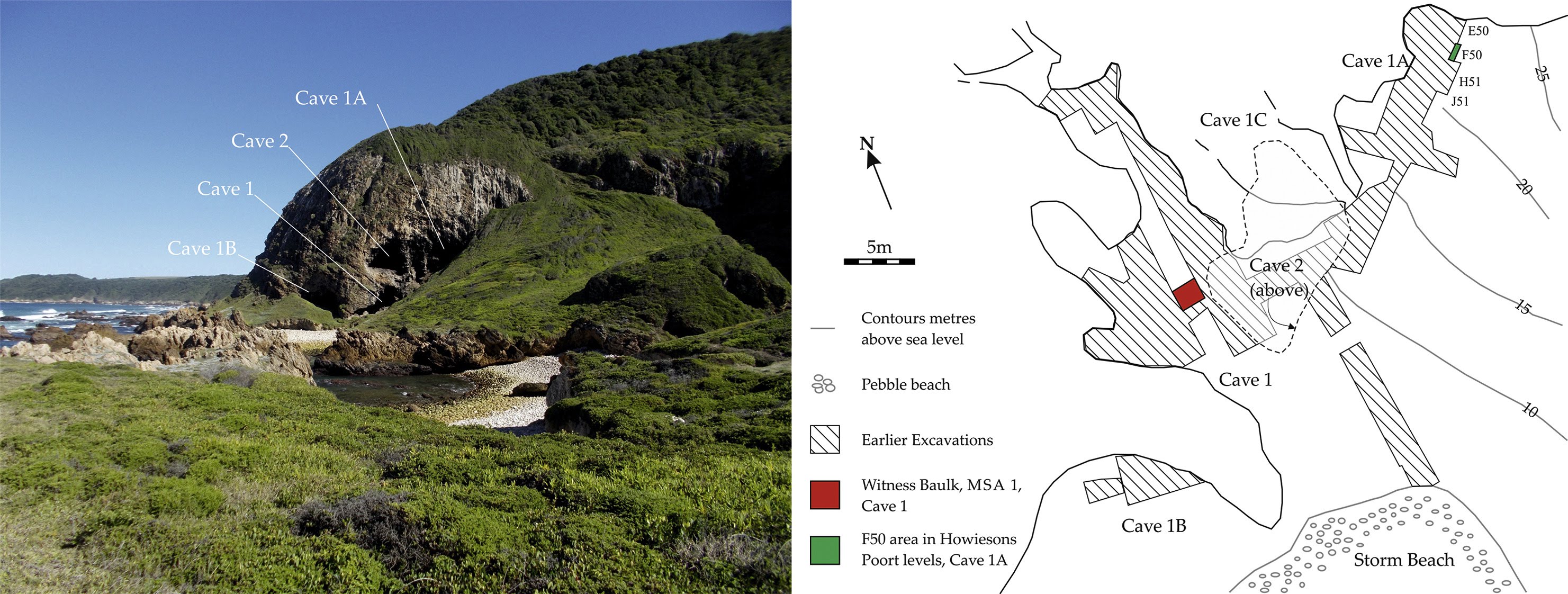attempto online Forschung
25.04.2019
Oldest evidence for cooking starchy plants
New research published in the Journal of Human Evolution provides the earliest archaeological evidence that anatomically modern humans were roasting and eating plant starches as early as 120,000 years ago.
Lead author Cynthia Larbey of the Department of Archaeology at the University of Cambridge says, “Our findings provide the archaeological evidence that has previously been lacking to support the hypothesis that the duplication of the starch digestion genes is an adaptive response to an increased starch diet.”
“This is very exciting. The genetic and biological evidence previously suggested that early humans would have been eating starches, but this research had not been done before. So, at Klasies River we took a team approach, firstly to find and analyse undisturbed hearths and secondly, to take botanical samples from those hearths and compare findings.”
Klasies River is a very famous early human occupation site on the Cape coast of South Africa. In these caves, co-author Susan Mentzer of Eberhard Karls Universitӓt Tübingen, the Senckenberg Centre for Human Evolution and Paleoenvironment (HEP-Tübingen), and the University of Arizona, identified small (c. 30cm in diameter) hearths.
Her high-resolution analyses of the hearths demonstrated that the features were overall well preserved and contained, in addition to the tuber remains, fragments of heated shells and heated bones. In both cases, it appears that the hearths were reused multiple times.
Work by Bertrand Ligouis – also of the Eberhard Karls Universitӓt Tübingen – revealed that charcoal in hearths was very fragile due to chemical alteration. For this reason, Larbey engaged in a meticulous process of “micro-excavation” of tiny blocks of sediment from the hearths, an approach that enabled her to recover fragments of plant tissue to study with a scanning electron microscope (SEM). In addition, the presence of the root and tuber tissues in the ashy parts of the hearths indicate that burning was not accidental, but rather that the plants were intentionally cooked.
According to Larbey, “the results show these small ashy hearths were used for cooking food and starchy roots and tubers were clearly part of their diet, both from the earliest levels at around 120,000 years ago through to 65,000 years ago. So, despite changes in hunting strategies and stone tool technologies, they are still cooking roots and tubers.”
The wider implications of this new research include a glimpse into early human migration. The ability to use cooked roots and tubers as a staple provided greater adaptability for humans to colonise new regions of the world.
Larbey adds, “Starch diet isn’t something that happens when we start farming, but rather, is as old as humans themselves.”
Original text courtesy of a press release provided by the University of Cambridge, with additional text provided by Susan Mentzer.
Funding for the work of co-authors Mentzer and Ligouis was provided by the Baden-Württemberg Stiftung.
Publication:
Cooked starchy food in hearths ca. 120 kya and 65 kya (MIS 5e and MIS 4) from Klasies River Cave, South Africa – Cynthia Larbey, Susan M. Mentzer, Bertrand Ligouis, Sarah Wurz, Martin K. Jones. Journal of Human Evolution, Volume 131, 2019, Pages 210-227, ISSN 0047-2484. doi.org/10.1016/j.jhevol.2019.03.015

